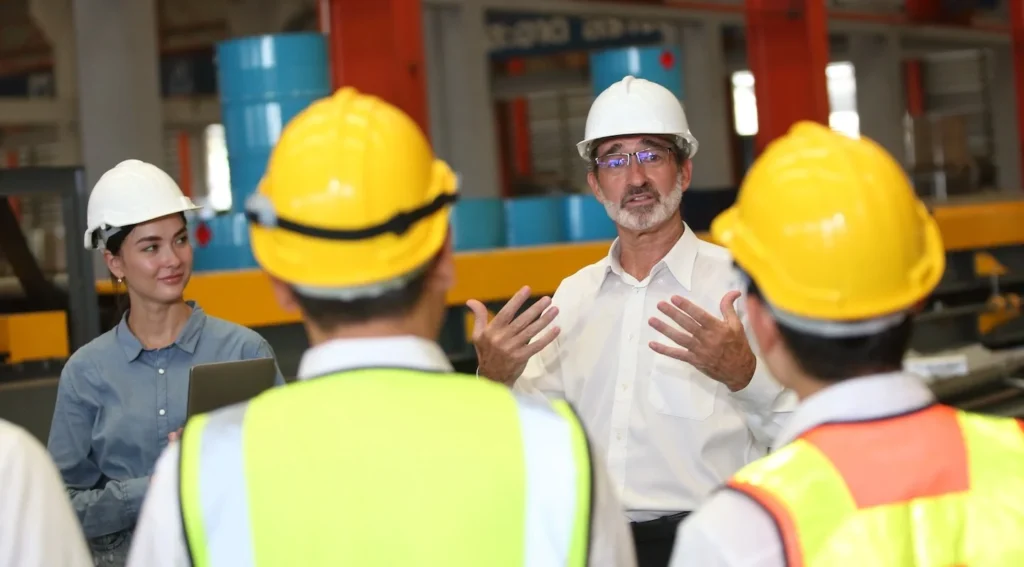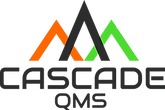MASTER SAFETY COMPLIANCE
Elevate Your Team's Safety with Professional Toolbox Talks
Ensure you meet OSHA toolbox talk topic requirements and satisfy vetting systems like ISNetworld with our expertly written content. It’s the fastest way to build a lasting safety culture.
Get Your Custom Safety Solution Today
Enhance On-Site Safety
What are Toolbox Talks?
A Toolbox Talk is a brief, on-site safety meeting designed to keep safety top of mind and prevent accidents. These short discussions, typically lasting 5-10 minutes, reinforce safe work practices and provide your team with the essential information they need to stay safe on the job.
We provide a wide range of professionally written Toolbox Talk Topics available for all industries. You can purchase them individually or as part of our comprehensive Safety Bundles, which combine safety talks with a full, customized written program.


Safety Bundles
Toolbox Talks + Written Safety Programs
Go beyond simple awareness and establish a professional safety culture. Our Safety Bundles combine our expert-written Toolbox Talks with a fully customized Written Safety Program. These programs are designed to meet the specific requirements of major vetting systems like ISNetworld®, Veriforce®, and Avetta®.
Each Safety Bundle is customized with your company name and logo, saving you time and ensuring you meet client compliance requirements.
Benefits of Effective Toolbox Talks
Improved Safety Awareness
Toolbox Talks, or Tailgate Talks, help to raise awareness of potential hazards and reinforce safe work practices. By discussing specific safety topics, workers are better informed and more likely to recognize and avoid hazards on the job.
Increased Communication & Collaboration
These talks provide an opportunity for supervisors and workers to communicate and collaborate on safety issues. Encouraging questions and insights helps to foster a culture of open communication and teamwork on safety matters.
Reduced Incidents & Accidents
By improving safety awareness and promoting safe practices, Toolbox Talks help to reduce incidents and accidents in the workplace. This can lead to a safer work environment, lower insurance premiums, and reduced costs associated with injuries.
Consistent Compliance & Vetting
Our professional, ready-made talks provide the consistent, documented content you need to satisfy auditing requirements from clients and platforms like ISNetworld and Avetta. This streamlines your compliance process and enhances your company’s safety profile.
Most common INDIVIDUAL Safety talk TOpics:
Slips, Trips, and Falls
Personal Protective Equipment (PPE)
Hazard Communication
Electrical Safety
Ladder Safety
Fire Safety
Machine Guarding
Ergonomics
Working at Heights
Confined Space Entry
Hand and Power Tool Safety
Respiratory Protection
Chemical Handling and Storage
Crane and Rigging Safety
Excavation and Trenching Safety
Vehicle Safety
Workplace Violence Prevention
Heat Stress Prevention
Cold Weather Safety
Emergency Response and Evacuation Procedures
Severe Weather
And many more!
Toolbox Talks by Industry
Aerospace
- FOD (Foreign Object Debris/Damage) Prevention
- Aircraft Ground Handling Safety
- Working at Heights
- Electrical Safety
- Tool and Equipment Safety
- Chemical Handling and Hazard Communication
- Fire Safety and Emergency Procedures
- Human Factors in Aerospace
- Quality Assurance and Compliance
- Personal Safety and Wellness
Agriculture
- Farm Machinery Safety
- Pesticide Handling and Safety
- Animal Handling and Safety
- Heat Stress Prevention
- Farm Electrical Safety
- Confined Spaces in Agriculture
- Grain Bin Safety
- Farm Equipment Maintenance
- Personal Protective Equipment (PPE) in Agriculture
- Ergonomics in Farming
Basic Metal
- Machine Guarding Safety
- Welding and Cutting Safety
- Handling Heavy Materials
- Hazardous Chemicals Handling
- Ergonomics in Metalworking
- Lockout/Tagout Procedures
- Personal Protective Equipment (PPE) in Metalworking
- Noise Control in Metal Industries
- Fire Safety in Metalworking Environments
- Manual Handling Techniques
Chemical
- Hazardous Chemical Handling and Storage
- Personal Protective Equipment (PPE) for Chemical Handling
- Chemical Spill Response and Cleanup
- Chemical Labeling and Safety Data Sheets (SDS)
- Respiratory Protection in Chemical Environments
- Confined Space Entry in Chemical Plants
- Chemical Reactivity Hazards
- Emergency Shower and Eye Wash Stations
- Hazard Communication and Training
- Flammable and Combustible Materials
Communication
- Effective Communication in the Workplace
- Active Listening Skills
- Teamwork and Collaboration
- Conflict Resolution Strategies
- Clear and Concise Writing
- Professional Email Etiquette
- Cultural Sensitivity and Diversity Awareness
- Verbal Communication Techniques
- Non-verbal Communication Awareness
- Handling Difficult Conversations
Construction
- Fall Protection and Working at Heights
- Scaffolding Safety
- Excavation and Trenching Safety
- Electrical Safety on Construction Sites
- Personal Protective Equipment (PPE) in Construction
- Hand and Power Tool Safety
- Crane and Rigging Safety
- Concrete and Masonry Construction Safety
- Silica Dust Exposure Control
- Heat Stress Prevention
Electrical
- Electrical Hazard Awareness
- Lockout/Tagout Procedures
- Safe Use of Extension Cords and Power Strips
- Working Safely with Electricity
- Arc Flash and Electrical Shock Hazards
- Proper Use of Personal Protective Equipment (PPE) for Electrical Work
- Electrical Panel Safety
- Ground Fault Circuit Interrupters (GFCIs) Awareness
- Emergency Response to Electrical Incidents
- Electrical Equipment Maintenance
Food
- Food Safety Basics
- Personal Hygiene in Food Handling
- Cross-Contamination Prevention
- Allergen Management
- Cleaning and Sanitizing Procedures
- Temperature Control in Food Storage and Preparation
- Pest Control in Food Facilities
- Emergency Preparedness and Response in Food Handling
- Proper Handling of Raw and Ready-to-Eat Foods
- Food Labeling and Traceability
General Industry
- Hazard Communication
- Personal Protective Equipment (PPE)
- Lockout/Tagout Procedures
- Ergonomics
- Fire Safety
- Slips, Trips, and Falls
- Electrical Safety
- Machine Guarding
- Chemical Safety
- Emergency Response
Green Energy
- Renewable Energy Basics
- Solar Panel Installation Safety
- Wind Turbine Maintenance Safety
- Battery Storage Safety
- Electrical Safety in Renewable Energy Systems
- Working at Heights in Renewable Energy Projects
- Hazardous Materials Handling in Green Energy
- Emergency Response Planning for Green Energy Sites
- Environmental Impact Awareness in Green Energy Projects
- Personal Protective Equipment (PPE) for Green Energy Work
Information Technology
- Cybersecurity Best Practices
- Data Protection and Privacy Measures
- Safe Use of Company Networks and Devices
- Password Security and Management
- Phishing and Social Engineering Awareness
- Software Updates and Patch Management
- Safe Remote Working Practices
- Physical Security of IT Equipment and Data Centers
- IT Disaster Recovery and Business Continuity Planning
- Compliance with IT Policies and Regulations
Landscaping and Horticulture
- Lawn Mower Safety
- Proper Use of Hand Tools (e.g., pruning shears, shovels)
- Pesticide Handling and Safety
- Irrigation System Maintenance and Safety
- Tree and Shrub Pruning Safety
- Working Safely with Landscape Machinery (e.g., trimmers, blowers)
- Heat Stress Prevention in Outdoor Environments
- Proper Lifting Techniques for Landscape Work
- Personal Protective Equipment (PPE) for Landscaping Tasks
- Environmental Conservation Practices in Landscaping
Oil and Gas
- Hazardous Chemical Handling and Storage
- Confined Space Entry in Oil and Gas Facilities
- Fire Safety and Prevention in Oil and Gas Operations
- Personal Protective Equipment (PPE) for Oil and Gas Workers
- Electrical Safety in Oil and Gas Facilities
- Machinery and Equipment Safety in Oil and Gas Operations
- Fall Protection in Oil and Gas Rigs and Platforms
- Emergency Response and Evacuation Procedures
- Hazard Communication in Oil and Gas Workplaces
- Gas Detection and Monitoring Practices
Pharmaceutical
- Personal Protective Equipment (PPE)
- Chemical Handling and Safety
- Cleanroom Protocol
- Health and Hygiene Practices
- Emergency Procedures
- Safe Equipment Use
- Drug Storage and Handling
- Ergonomics and Workplace Comfort
- Health and Wellness
- Regulatory Compliance
Plant/Manufacturing
- Equipment Safety and Maintenance
- Hazardous Materials Handling
- Machine Guarding and Lockout/Tagout Procedures
- Noise and Hearing Protection
- Confined Space Entry
- Material Handling and Storage
- Electrical Safety
- Fire Safety and Emergency Response
- Workplace Ergonomics
- Quality Control and Assurance
Plumbing
- Plumbing System Maintenance
- Water Quality and Purification
- Chemical Compatibility with Plumbing Materials
- Preventing Contamination in Water Systems
- Emergency Response for Plumbing Failures
- Proper Use of Plumbing Tools and Equipment
- Understanding and Following Plumbing Codes and Regulations
- Reporting and Addressing Plumbing Issues Promptly
- Ensuring Proper Drainage and Waste Management
- Importance of Regular Inspections and Maintenance
Solar Power Energy
- Solar Panel Installation Safety
- Electrical Safety for Solar Systems
- Maintenance and Cleaning of Solar Panels
- Monitoring Solar Energy Output
- Weather and Environmental Considerations
- Emergency Procedures for Solar System Failures
- Understanding Solar Inverter Operations
- Solar Energy Efficiency Tips
- Reporting and Addressing Solar System Issues
- Environmental Benefits of Solar Energy
Utility
- Utility Safety Procedures
- Electrical Safety
- Boiler and Steam System Safety
- HVAC (Heating, Ventilation, and Air Conditioning) Maintenance
- Water Treatment and Purification Systems
- Gas and Compressed Air Safety
- Emergency Procedures for Utility Failures
- Energy Efficiency Practices
- Reporting and Addressing Utility System Issues
- Compliance with Utility Regulations


Leading Toolbox Talk Meetings
Toolbox Talk meetings can be an incredible investment of 5-10 minutes, if performed correctly. While it’s just one more two sheets of paper, it’s not to be taken lightly. Below we’ve broken down the steps to leading a successful toolbox talk meeting. Each step is vital to protecting your company’s assets.
Preparation
- Choose a relevant safety topic based on current work activities or safety concerns.
- Gather necessary materials such as visual aids, safety data sheets, or equipment examples.
- Choose a safe location to host the meeting.
- Ensure all employees attend (consider breaking up the meeting in segments to accommodate actively working employees)
Start Strong
- Begin with a brief introduction of the topic and its importance.
- Establish ground rules for the meeting, such as respecting each other’s input and focusing on safety.
- Use voice-animation to prevent monotone and redundancy.
- Keep the audience entertained.
Engage Participants
- Encourage active participation by asking open-ended questions.
- Discuss real-life scenarios or near misses related to the topic to make it relatable.
- Invite personal experiences or insights from team members.
- Ask questions to test existing knowledge.
- Consider interactive games or knowledge shares to test involvement.
Focus on Key Points
- Cover the main points of the topic clearly and concisely.
- Use visual aids or demonstrations to enhance understanding, if applicable.
- Emphasize practical tips or procedures for safe work practices.
Encourage Discussion
- Recap the main takeaways and key safety measures discussed.
- Highlight any specific action items or responsibilities assigned to team members.
- Clarify where additional resources or support can be accessed if needed.
- Use real-life scenarios and/or incorporate props (tools in question, signage, safe demonstrations)
Summarize and Reinforce
There are a few key factors to consider when establishing training material for your company: industry, federal, and local requirements. A seasoned Cascade QMS consultant will work directly with you to determine which programs are a good fit.
Close Effectively
- Conclude with a brief summary and thank participants for their involvement.
- Provide contact information for follow-up questions or further discussion.
- Reinforce the importance of applying the discussed safety practices in daily work routines.
- Make certain employees have access to ask after meeting questions.
Document and Follow Up
- Record attendance and key points discussed for documentation purposes.
- Schedule follow-up meetings or reviews to assess the implementation of safety measures.
- Incorporate feedback from participants into future toolbox talks to improve engagement and relevance.
- Take notes to further develop and improve safety training material.
Toolbox Talks in Action
Want an even more engaging way to share safety knowledge with your team? Our animated Toolbox Talk, or Tailgate Talk, videos are a perfect complement to our written programs.
Watch our short, dynamic videos on topics like Safe Lifting Techniques, PPE, and Fire Safety to capture your team’s attention and reinforce critical safety concepts in a new format.

Get Your Toolbox Talks or Safety Bundle Today
Partner with Cascade QMS for professional and accurate safety programs and talks.
